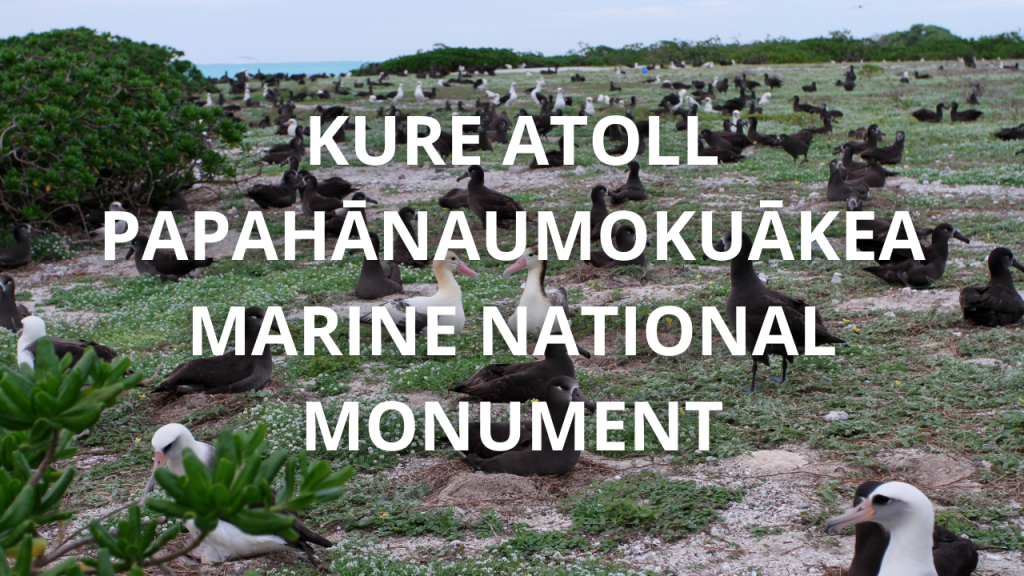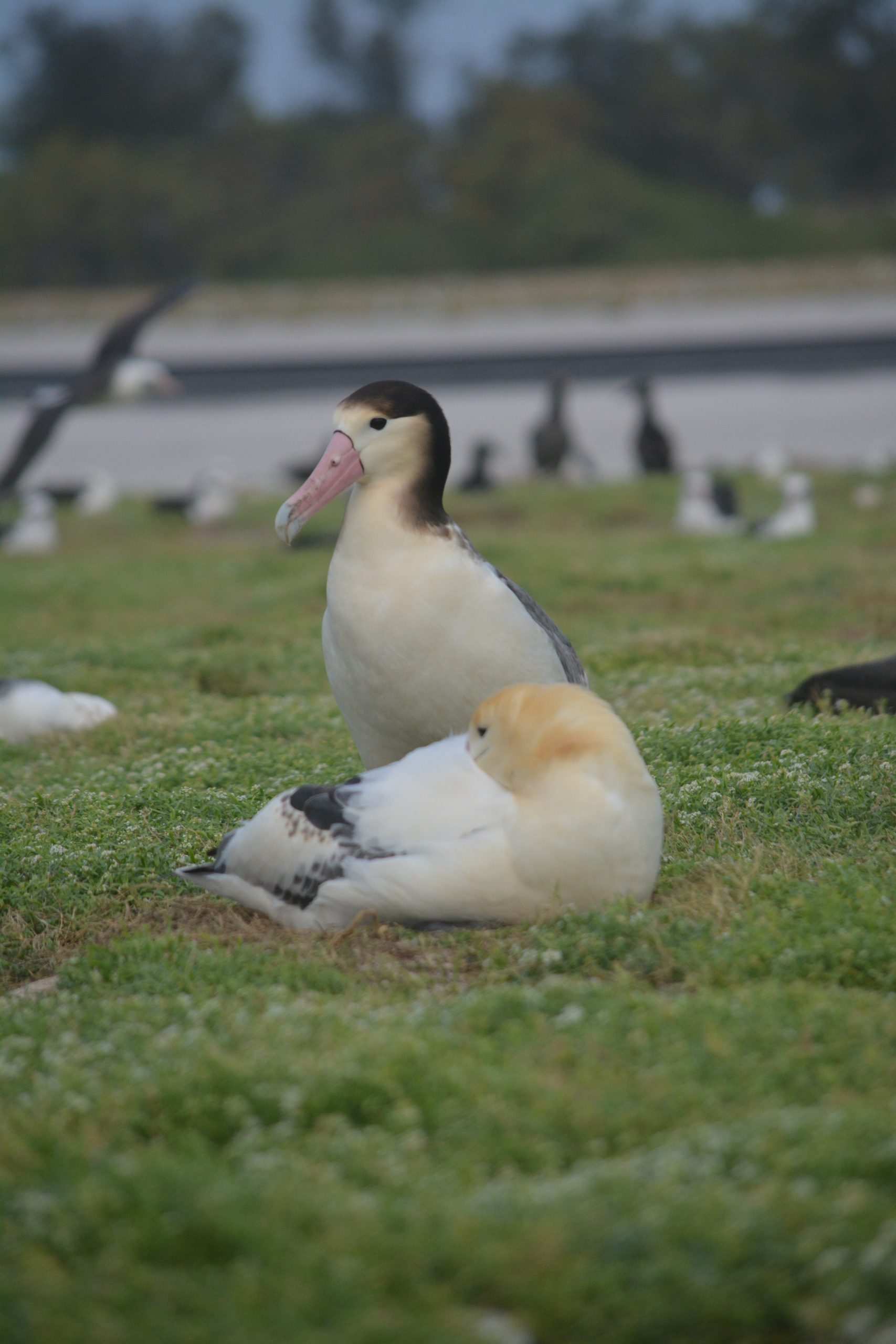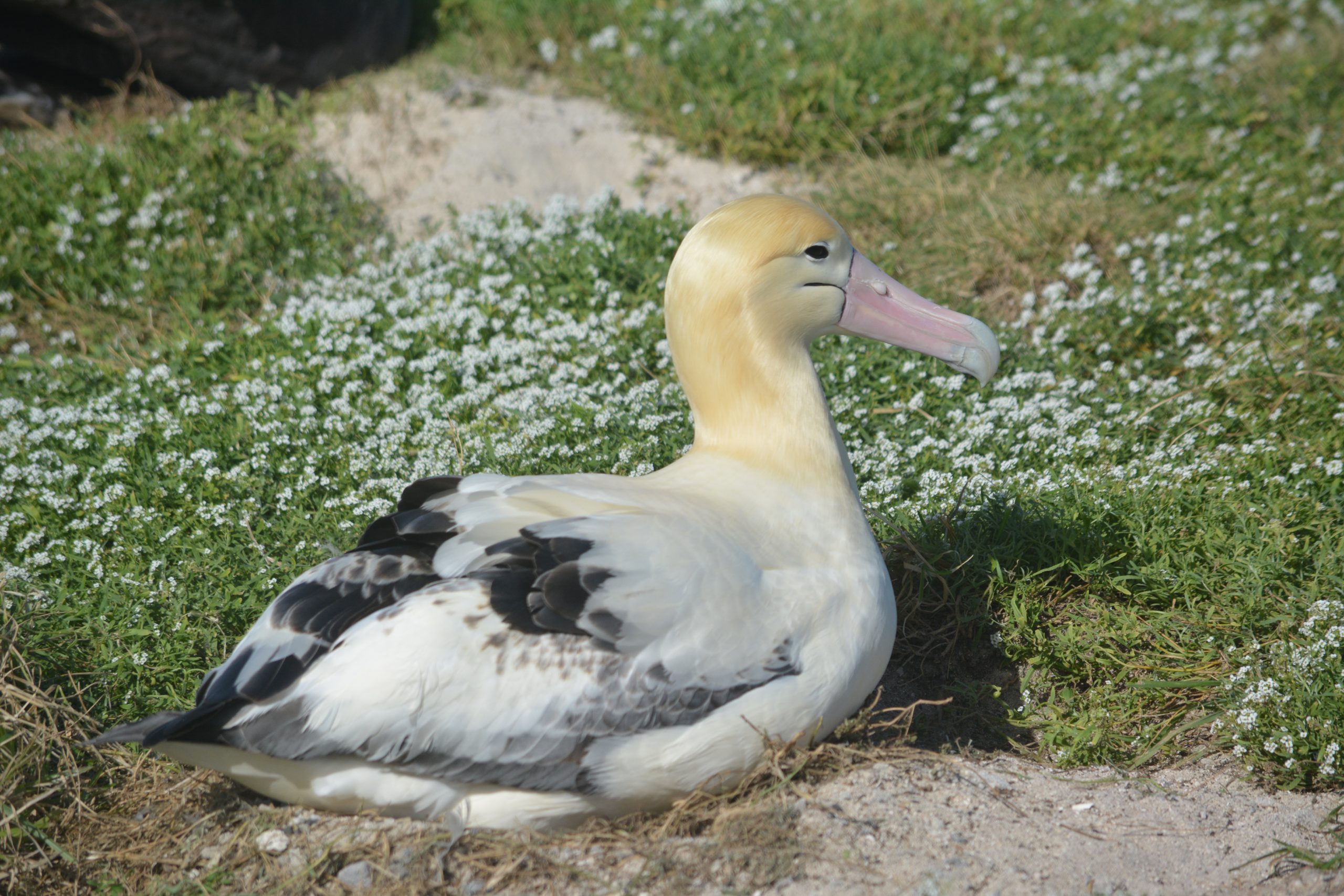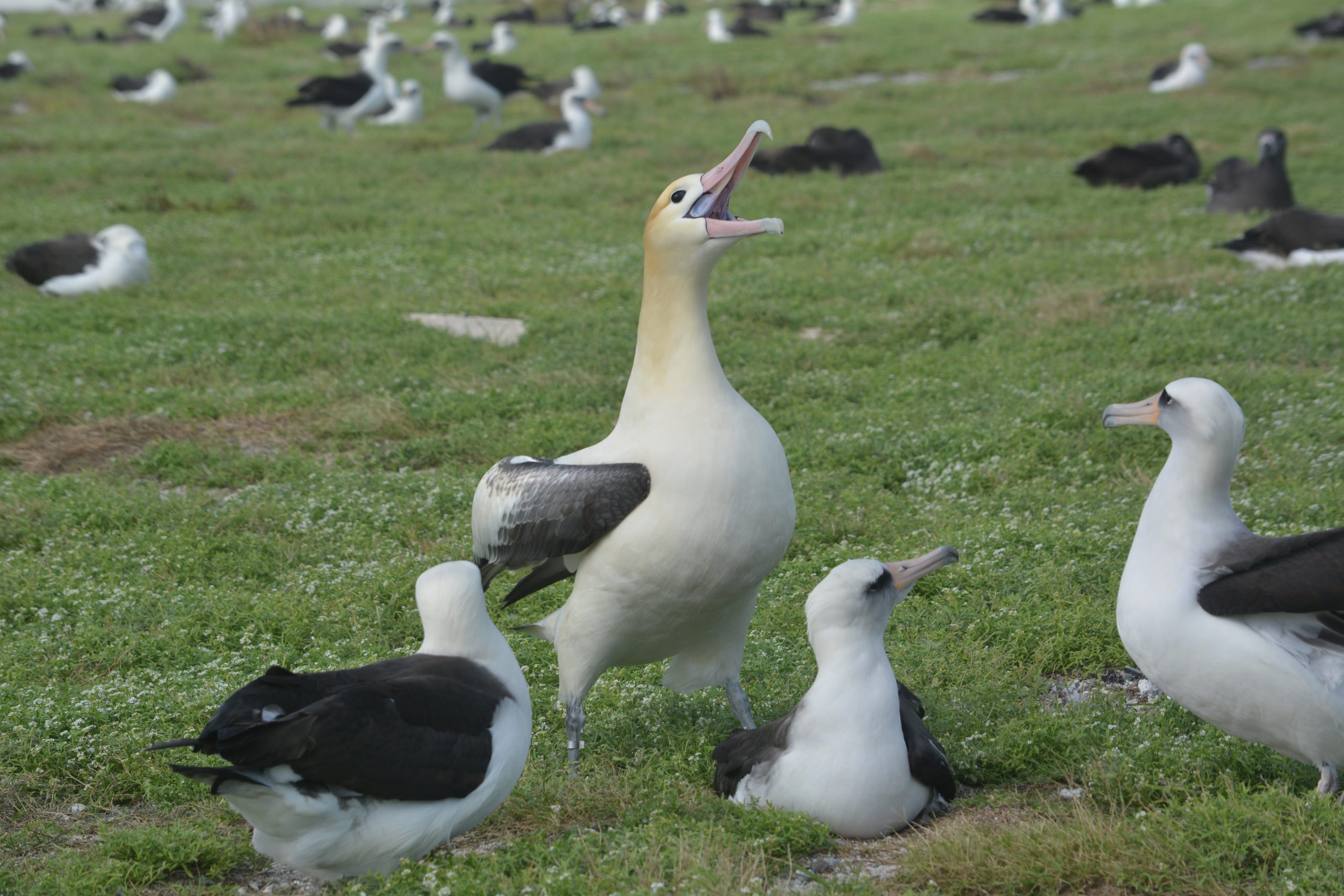Short-tailed Albatross
Names
- Common: Short-tailed albatross
- Scientific: Phoebastria albatrus
Conservation Status
- Federally Listed as Endangered
- State Listed as Endangered
- NatureServe Heritage Rank G1 – Critically Imperiled
- IUCN Red List Ranking – Vulnerable
Species Information
The short-tailed albatross is the largest seabird (Family: Diomedeidae) found in Hawai‘i. Adult males and females are mostly white, with varying amounts of black, mostly on the upper side of the wings, and a golden wash on the head. Huge pink bill has a bluish tip and legs and feet are pale pink. Like other albatrosses, they use air currents to glide and soar for long periods of time and feed by seizing prey from the surface while sitting on the water. They forage closer to land than other albatross species. Scavenges from carrion and follows fishing boats. In Japan, their diet consists primarily of shrimp, squid, and fish, including bonita, flyingfish, and sardines. As far back as the 1930s, individuals have occurred among nesting mōlī or Laysan (P. immutabilis) and ka‘upu or black-footed (P. nigripes) albatross at Midway Atoll. See fact sheets for mōlī or ka‘upu for details of breeding biology. Like other albatrosses, the short-tailed albatross likely has a life span of at least 50 years.
Distribution
Small numbers of birds nest on Midway Atoll and Kure Atoll in the Northwestern Hawaiian Islands. Outside of Hawai‘i, the species nests on several small islands offshore of Japan. At sea, the short-tailed albatross ranges widely across the north Pacific Ocean.
Habitat
Terrestrial: Nests on islands and atolls. Nests are similar to other albatross species. Marine: Pelagic.
Threats
The primary threat to this species is the limited breeding distribution, and a catastrophic event at one of the main colonies could have detrimental effect on the population. Other threats to the short-tailed albatross include the following:
- Human disturbance and conflict. Historically the most common albatross in the north Pacific Ocean, the species’ population numbered in the millions. By the 1930s the short-tailed albatross was thought to be extinct as a result of wanton killing for their feathers (millinery trade).
- Fishery bycatch. U.S. longline fisheries bycatch has been greatly reduced in the last 10-20 years and associated mortalities is thought to be infrequent and low. However, the amount of bycatch mortality from fisheries outside of U.S. waters is relatively unknown and remains a potential threat to the species.
- Marine pollution. As is true for other albatrosses, ingestion of plastic debris and toxic effects of oil, metals, mercury, and persistent organic pollutants are threats.
- Catastrophic events. Volcanic eruptions, earthquakes, landslides, and typhoons at breeding colonies have caused reproductive failures on nesting colonies in Japan.
Explore from Home
Additional Resources
For more information and references visit the DLNR State Wildlife Action Plan factsheets. DOFAWʻs species pages and State Wildlife Action Plan fact sheets are provided for general information and are not meant to be a citable, original source of data. If you are a student, researcher, or writer looking for a citable source, please explore the references below or find other original data sources, rather than citing these webpages. The references below were provided by the authors of the State Wildlife Action Plan fact sheets at the time of drafting:
- IUCN Red List of Threatened Species. Version 2014.3. www.iucnredlist.org. (Accessed May 2015).
- NatureServe. 2003. Downloadable animal data sets. NatureServe Central Databases. Available at: https://www.natureserve.org/getData/vertinvertdata.jsp (March 10, 2005).
- U.S. Fish and Wildlife Service. 2005. Regional seabird conservation plan, Pacific Region. U.S. Fish and Wildlife Service, Migratory Birds and Habitat Programs, Pacific Region. Portland, Oregon.
- U.S. Fish and Wildlife Service. 2008. Short-tailed Albatross Recovery Plan. Anchorage, Alaska.
- U.S. Fish and Wildlife Service. 2014. Short-tailed Albatross (Phoebastria albatrus). 5-Year Review: Summary and Evaluation. Anchorage, Alaska.
- VanderWerf, EA. 2012. Hawaiian Bird Conservation Action Plan. Pacific Rim Conservation, Honolulu, Hawai‘i.





